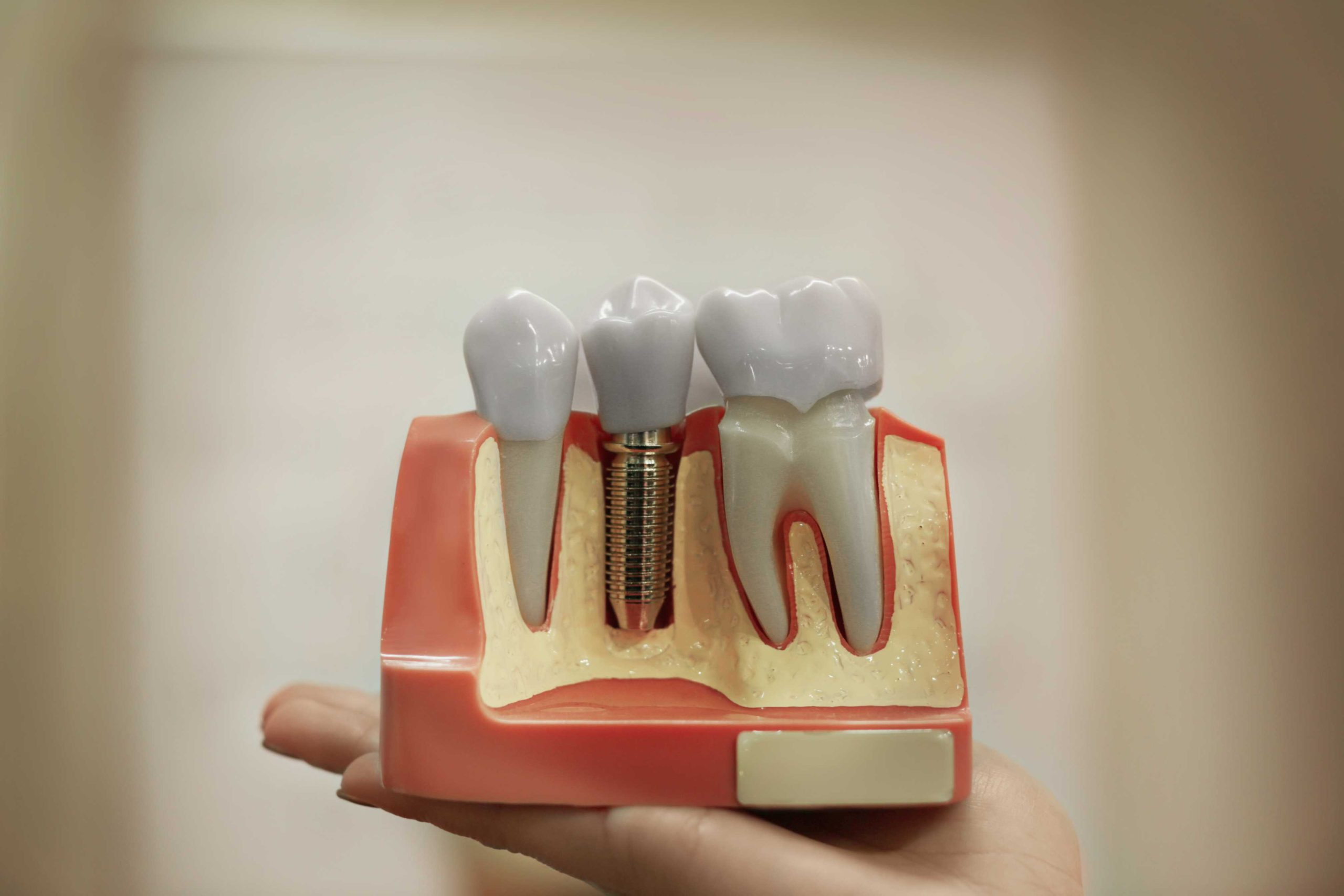Book an Appointment
If you are looking for a dentist in Ipswich, The Dental Practice Ipswich would love to hear from you.
Implant Based Restorations

Dental Implants Extractions Treatment in Ipswich
Implants are also used to replace missing teeth. An implant is a cylindrical-shaped metal object that is placed in the bone. After few months the bone integrates with the implant and then an impression is taken to make a crown on the implant. This implant is then screwed down on top of the implant.
Great care is taken when doing surgical and restorative procedures like implants. A CBCT is taken to see the bone available. Models are studied to check for space and the condition of other teeth is checked before placing an implant.
Dental Implants FAQs
What are dental implants?
Dental implants are artificial tooth roots made of titanium that provide a permanent base for fixed or removable replacement teeth. They are designed to blend in with your natural teeth and provide a strong foundation for fixed (permanent) or removable replacement teeth.
Why should I choose dental implants?
Dental implants are a popular choice for tooth replacement because they:
- Look and feel like natural teeth
- Are durable and long-lasting
- Preserve jawbone structure and prevent bone loss
- Improve oral health by preventing adjacent teeth from shifting
- Do not require the alteration of nearby healthy teeth, as bridges do
Who is a candidate for dental implants?
Most people who are missing one or more teeth and have good oral health are candidates for dental implants. Ideal candidates should have:
- Healthy gums
- Adequate bone to support the implant or be eligible for a bone graft
- Good overall health
- A commitment to maintaining oral hygiene
What does the dental implant procedure involve?
The dental implant procedure typically involves several steps over a few months:
- Consultation and planning: Your dentist will evaluate your oral health, take X-rays or 3D images, and develop a treatment plan.
- Implant placement: The dental implant is surgically placed into the jawbone under local anesthesia or sedation. The implant is left to integrate with the bone for several months.
- Abutment placement: Once the implant has fused with the bone, an abutment (connector) is attached to the implant.
- Crown placement: A custom-made crown is attached to the abutment, completing the restoration.
How long does it take to get dental implants?
The entire dental implant process can take anywhere from 3 to 9 months, depending on the individual case and the need for any additional procedures, such as bone grafting.
Is the dental implant procedure painful?
Local anesthesia or sedation is used during the implant placement to ensure you are comfortable and pain-free. Some discomfort and swelling are normal after the procedure, but these symptoms can be managed with over-the-counter pain medications and should subside within a few days.
How do I care for my dental implants?
Caring for dental implants is similar to caring for natural teeth:
- Brush twice a day with a soft-bristle toothbrush
- Floss daily to remove plaque and food particles
- Use an antibacterial mouthwash
- Avoid hard or sticky foods that could damage the implants
- Visit your dentist regularly for check-ups and cleanings
How long do dental implants last?
With proper care and maintenance, dental implants can last a lifetime. The crowns attached to the implants may need to be replaced every 10 to 15 years due to normal wear and tear.
What are the risks and complications of dental implants?
While dental implants have a high success rate, potential risks and complications include:
- Infection at the implant site
- Injury or damage to surrounding structures, such as other teeth or blood vessels
- Nerve damage, causing pain, numbness, or tingling
- Sinus problems, if implants placed in the upper jaw protrude into the sinus cavities
How much do dental implants cost?
The cost of dental implants varies depending on the number of implants needed, the complexity of the case, and your location. On average, the cost can range from $3,000 to $5,000 per implant, including the implant, abutment, and crown. Dental insurance may cover part of the cost, so it’s important to check with your insurance provider.
What are the alternatives to dental implants?
If dental implants are not suitable for you, other tooth replacement options include:
- Dental bridges: Fixed prosthetics that bridge the gap created by one or more missing teeth, anchored by adjacent teeth.
Dentures: Removable appliances that replace missing teeth and surrounding tissues. They can be full (replacing all teeth) or partial (replacing some teeth).
